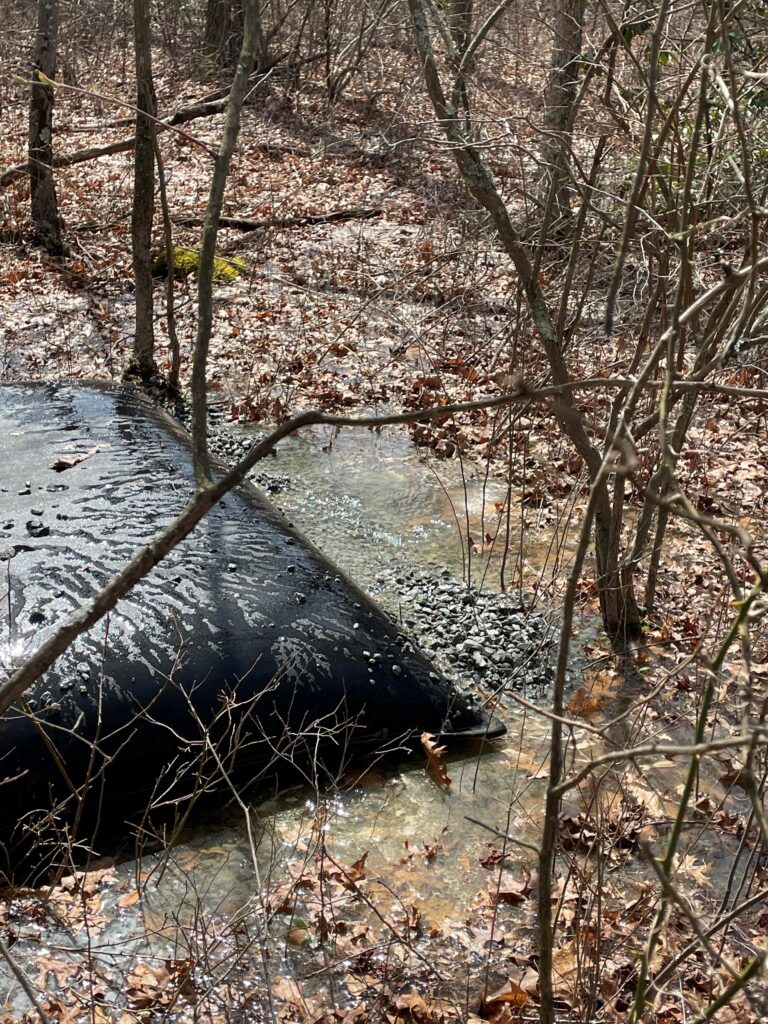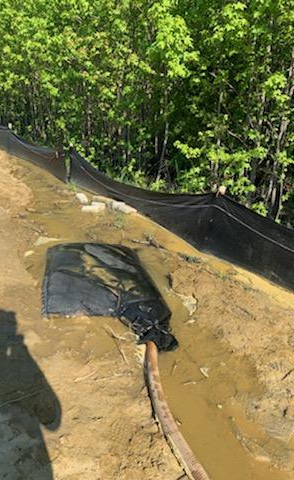Dewatering is a critical process in construction, especially in areas like Ocean County, New Jersey, where high water tables and proximity to the coast make managing water essential. Whether you’re building a new structure, laying foundations, or installing underground utilities, dewatering ensures that the work site remains dry and safe, and the environment is protected. Here’s a closer look at what dewatering is, why it’s necessary, and how it should—and shouldn’t—be done.
What is Dewatering?
Dewatering is the process of removing sediment laden surface water from an excavated area, construction site or basin during construction. The goal is to lower the water table and create a dry, stable area for construction activities. Without proper dewatering, water can seep into excavations, leading to delays, safety hazards, and potential structural issues in the completed project. Water must be removed and disposed of properly in order for construction to move forward.
Why is Dewatering Necessary?
Waterlogged soil can compromise the stability of a construction site, making it dangerous for workers and equipment. By controlling water levels, dewatering helps maintain a safe work environment. Foundations and other structures require a dry, stable base. Excess water can weaken the soil, leading to uneven settling, cracks, and other structural problems over time. In Ocean County, proper dewatering practices are essential to ensure that construction activities do not negatively impact the surrounding ecosystem.
Proper Dewatering Practices
All dewatering activities in New Jersey must be done in accordance with the New Jersey State Standard of Dewatering (14-1). Dewatering methods include removable pumping stations for long durations of pumping, sump pits and sediment control bags. A sediment control bag is installed to the dewatering hose of the pump to help capture the sediment during the process. The bags must be located away from receiving waters in a stable receiving area and disposed of according to manufacturer’s instructions. The bags can be combined with temporary filters, such as haybales or small clean stone for enhanced filtration. Unfiltered dewatering is not permitted, and the dewatering hose shall not be placed in a bare soil area. Placing a dewatering hose or a sediment control bag on a bare soil area can cause erosion and/or sediment laden water to discharge offsite causing environmental damage. It is important to continuously monitor the dewatering process to ensure that it is effective and does not cause unexpected problems, such as excessive soil erosion or sediment settlement.
Improper Dewatering Practices
Simply pumping water out without considering where it goes can lead to flooding, contamination of local water bodies, or erosion. Proper disposal is critical. Regulations regarding dewatering (New Jersey State Standard of Dewatering, 14-1) must be followed in order to protect Ocean County’s delicate ecosystems. Failing to comply with these rules may result in possible fines, work stoppages, and long-term damage to the environment.


Conclusion
Proper dewatering ensures that construction sites are safe and suitable for building. By following dewatering regulations, contractors can avoid the pitfalls of improper dewatering, protecting both their projects and the surrounding environment. For anyone involved in construction, understanding and implementing these standards-based practices is not just a matter of compliance but also a commitment to sustainable and responsible building in our community.
